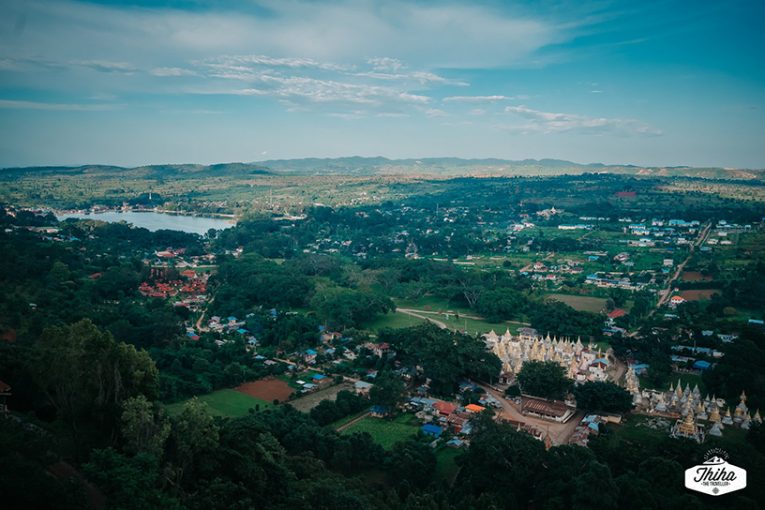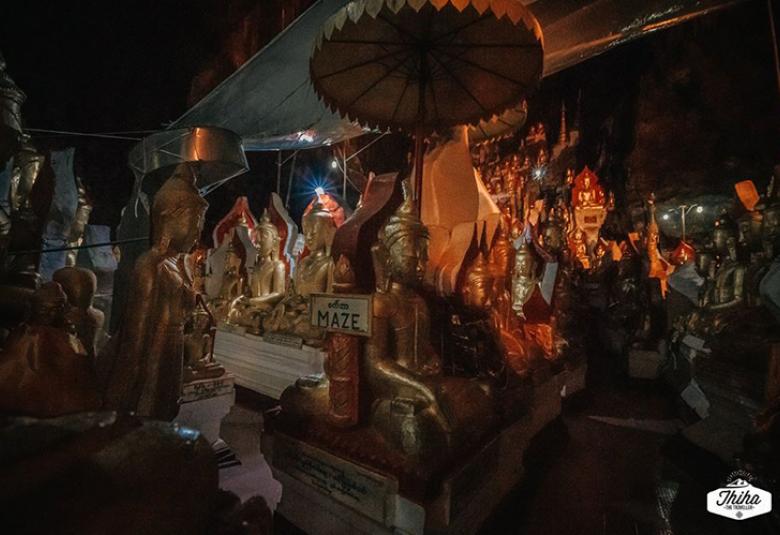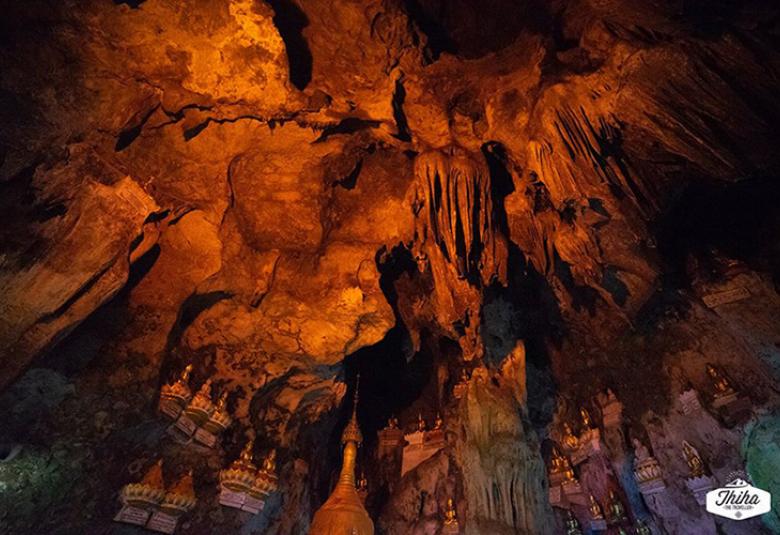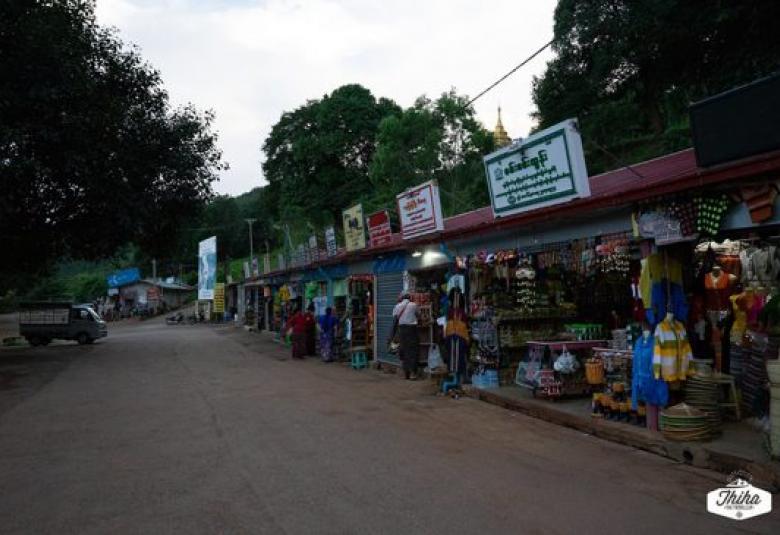By Thiha, the Traveller
@ Thiha Lulin
If a trip is taken to the south of Shan State (South), firstly Kalaw, Inlay and Taunggyi are thought of visiting and much time is usually given to go there, but Pindaya is near in position en route to these worth-visiting places, however the travellers to the south of Shan State must not miss it. The travellers make a half day trip to Ywangan and Pindaya while visiting Kalaw, but of course Pindaya has many sights to keep the visitors occupied. It is a worth-visiting town spending at least one night stopover.
The author previously did not have an idea to have one day stopover in Pindaya because he did not think it has many sights to view. Once the author has seen hidden beauties in Pindaya, it dawns upon him that it is a worth-visiting site.
Pindaya, land of Danu
In Shan dialect, Pintaya is pronounced as Pindaya which means wide-ranging plain, some says far-reaching plain full of Bauhinia acuminate (a kind of Swedaw flower) and some differently says Pindaya came from Pintkuya since the spider was defeated in the legend. Pindaya is adjacent to Yaksawk in the north, to Ywangan in the west and Pwayhla in the south. There is a difficult access to water in Kalaw, but Pindaya has an easy access to water. Pindaya is known as the central region of the south of Shan State and it was one of 16 central regions in the time of ancient kings. The author had ever read that Pindaya is the vacant land between Shan and Myanmar. In 1741 Pindaya was originally situated and it is a town with 3,000 feet above sea level.
Pindaya’s history is unclear, but the stories of seven female nats, the spider and Konmabaya prince are very famous and talked about a lot by local people in this region. The spider is used as a tourism promotion logo especially making a trip to this region. In Konbaung era, Ngwe Khun Hmu ruled Pindaya and relatives succeeded in.
Danu Self-Administered Zone is home to most Danu people and PaO, Taungyoe, Manaw, Shan, Myanmar, Intha and Palaung are residing there as well.
Climate
Pindaya is a little hotter than Kalaw and Aungban.
How to get to Pindaya
Pindaya doesn’t have a direct highway bus line, but it can be reached Yaksawk highway bus. In the past there was 2+1 but now 2+2. Lonvine highway bus can reach directly to Yaksawk. If a flight is taken, there is a drive from Heho airport.
Worth-visiting places around Pindaya
There are not many places of visit inside the town, but small villages outside the town are nice to visit where local people are very friendly and delicate. It is not busy and noisy and its traffic is not heavy. Local people are helpful to each other.
Shwe Oo Min Natural Cave Pagoda
While in Pindaya, not to be missed is Shwe Oo Min Natural Cave Pagoda. It is situated on a high hill where the visitors can overlook an impressive view of the whole town. The author mentioned that if I say about the cave first before about the pagoda, this Shwe Oo Min cave naturally exists in lime stone. It is estimated to be 200 million years old.
The research showed that images of Buddha were found on 10 January in 1773 which guessed these were from the time of King Singu. The cave entrance was narrow in the past, but area of the cave entrance was enlarged in 1924. The pagoda was built there and from that time onward, number of Buddha images has been increasing and now there is no space left inside the cave because of the construction and it is a sign of sorrow. As soon as the visitors go up the cave, they can pay homage to the 75-feet high pagoda. If they go in according to road sign to the cave, they will have to pay obeisance to different shapes of Buddha images. At last the cave entrance becomes quite narrow. The entrance of the cave to the other end of the north is 490 feet long. This pilgrimage visit is especially good for the nature-lovers. The good sites the pilgrims to Shwe Oo Min Pagoda taking photos are the statutes of seven female nats, the spider and Konmabaya prince at the bottom of the hill.
Many shops and the car park located at the bottom of the hill of Shwe Oo Min Natural Cave Pagoda look very lovely. The dealings of the shopkeepers are very attractive to the customers and local products and traditional costumes are available there and these are return home gifts.
Pindaya Tabaung Festival (Pindaya Pagoda Festival) is held on the 6th Waxing of Tabaung every year. On such occasion, culture, dance and lifestyles of Danu ethnic can be observed. Those coming to the pagoda festival by bullock-carts spent many nights in the open fields near Shwe Oo Min Natural Cave Pagoda previously. These scenes are very much liked by the photographers.
Age-old banyan trees
While in Pindaya, don’t miss to take photograph near age-old banyan tree in front of Shwe Oo Min Natural Cave Pagoda. This kind of banyan tree can be seen in most parts of Pindaya, but this location look very impressive. Parts of a tree that grows out from the main stem look as beautiful as a painting. The author visited Pindaya by bicycle. Some visitors had the photo taken riding horses there. The visitors can hire the horses. Local products such as fruit, vegetables and snacks are available. The author strangely noticed that some elderly persons thought to be Chinese travellers were found among the stems of the banyan tree standing and concentrating.
Pon Taloke Lake (Poke Taloke Lake)
Pon Taloke Lake located in the downtown adds the attractiveness to the beauty of the town and beside it there is a banyan tree which is also a good place to take photographs and provide shade as well.
Pindaya Market
Once the author arrived in Pindaya market, he had to spot the day of the market with a teeming crowd. To be honest, he liked the market day of Kalaw more than that of Pindaya.
Pindaya Hawnan (Manor of Shan chief)
There is Hawnan in Pindaya. It is learnt that Shan chief of former times are still residing at Hawnan until now. The author missed visiting to Hawnan during the visit.
Pinseinpin and Hsekya-in villages
Pinseinpin and Hsekya-in in Pindaya were recognized as the villages of the community-based tourism in early September in 2018. Local people from these villages welcome the visitors and provide them with the services of accommodation and food. They arrange for trekking to the forest, visits to places of interest and observation of traditions of Danu ethnic. The visitors can enjoy Danu’s group dance, the dance of self-defence art with stick and drum in the evening.
(Translated by Htut Htut (Twantay)






